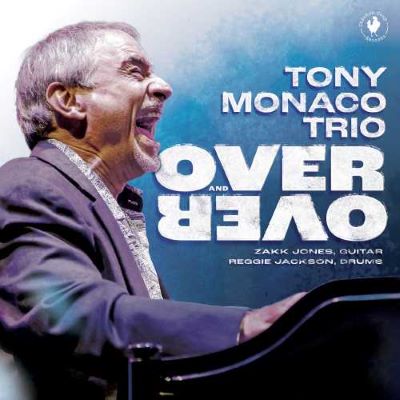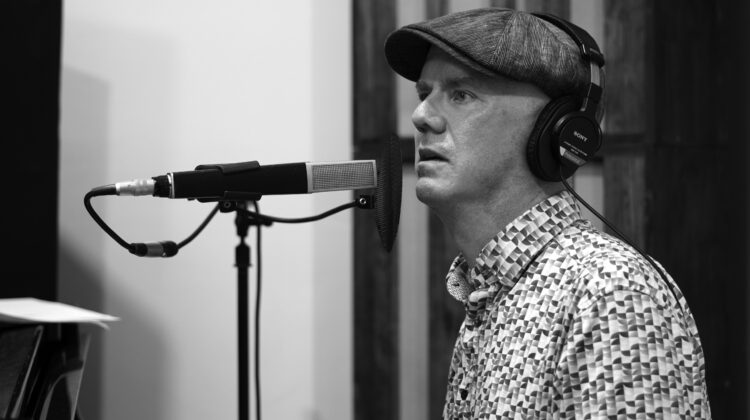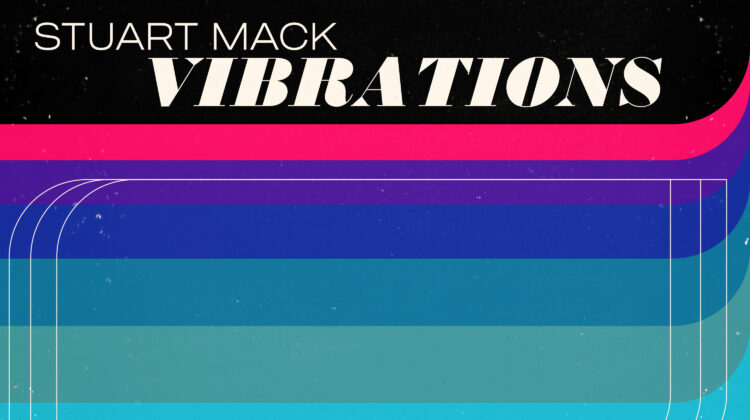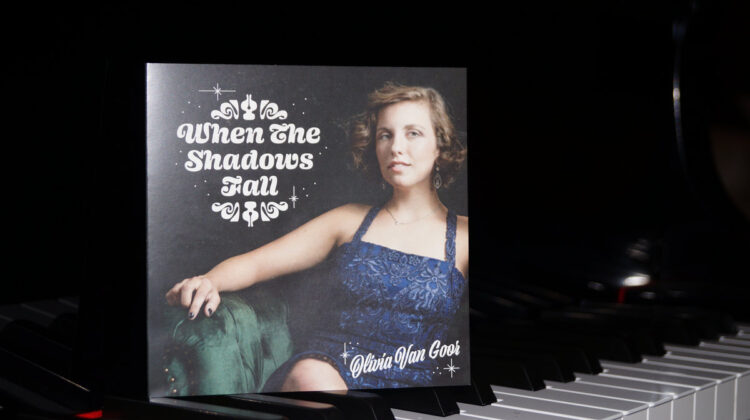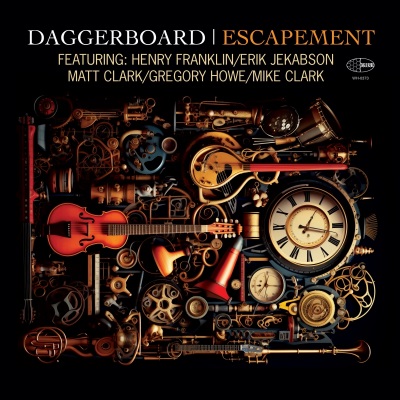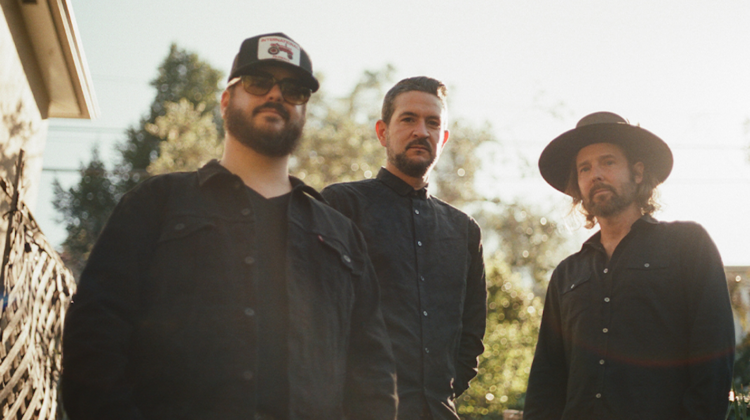Ben Wendel—saxophonist, bassoonist, composer, arranger, producer, educator, social media innovator, writer of movie scores, artistic council founder, member of numerous bands, musical group leader, musical visionary—has developed one of the year’s most fascinating jazz albums.
The Seasons, three years in refinement, had been available in its original form on YouTube. That series worked out so well for Wendel that he now is developing another video series, Standards with Friends, in which he works with even more musicians than those in The Seasons series. The influence of YouTube music videos grows as listeners go to the Internet for music discoveries. Similarly, Esperanza Spaulding released twelve YouTube videos in advance of her recordings’ availability in physical CD form.
But Wendel’s YouTube series of lavishly produced The Seasons performances emerged incrementally, month by month in 2015, as a body of work inspired by Tchaikovsky’s piano compositions called The Seasons.
 For monetary reasons, Tchaikovsky accepted a commission to write twelve seasonal piano solos for Nikolay Matveyevich Bernard’s Nouvellist, a Russian music magazine. In contrast, Wendel, an admirer of Tchaikovsky, used current mass communications media—namely online videos—to reach listeners. Tchaikovsky, as one would expect, wrote his pieces to reflect the characteristics of the northern hemisphere’s monthly experiences, such as “Autumn Song” in D minor as a description for October. The most famous of Tchaikovsky’s The Seasons remains, for June, the immediately recognizable Mendelssohn-like romantic piece, “Barcarolle,” though Tchaikovsky wasn’t above populist naturalistic effects like the repeated avian-like grace notes of “Song of the Lark” (March).
For monetary reasons, Tchaikovsky accepted a commission to write twelve seasonal piano solos for Nikolay Matveyevich Bernard’s Nouvellist, a Russian music magazine. In contrast, Wendel, an admirer of Tchaikovsky, used current mass communications media—namely online videos—to reach listeners. Tchaikovsky, as one would expect, wrote his pieces to reflect the characteristics of the northern hemisphere’s monthly experiences, such as “Autumn Song” in D minor as a description for October. The most famous of Tchaikovsky’s The Seasons remains, for June, the immediately recognizable Mendelssohn-like romantic piece, “Barcarolle,” though Tchaikovsky wasn’t above populist naturalistic effects like the repeated avian-like grace notes of “Song of the Lark” (March).
Wendel’s ideas for performing works named after the months derived from a decidedly different source: jazz artists he admires. Wendel’s humanistic approach to The Seasons allowed him to perform a monthly series of duos. The chosen musicians naturally were flattered not only by the video-recorded performance opportunities, but also by Wendel’s absorption of their musical styles and the essences of their personalities. It’s unclear whether Wendel chose his duo collaborators because they reminded him of the months during which their videos appeared, or if the choices were more mundanely a matter of availability for those months. Nonetheless, Wendel’s final work is undoubtedly an artistic achievement worthy of borderless attention. Through what is, in fact, musical descriptions of human souls, The Seasons transcends barriers, proving once again that music is an international language.
The Seasons video series transcends the ordinary because of its overriding comprehensive concept, which indeed did require a year to accomplish. Each month’s video was posted on, and remains on, Wendel’s web site. Wendel performed in wide-ranging intimate venues with the musicians characterized by the compositions, and he recruited director Alex Chaloff professionally to record the series.
Some appreciation for Chaloff:
Almost all of the discussions about The Seasons praises the collaborative music itself. But rather than the iPhone-pointed videos of some YouTube content, Chaloff subtly made lighting and angle decisions that emphasized the significance of the events. For example, Chaloff’s side lighting of Wendel and Joshua Redman in the Maybeck Recital Hall—the location of numerous jazz recordings—compensates for the cross-hatched window’s back light; studies their facial expressions and folded hands as their clothing’s light fades into featureless darkness; reveals the richness of the furniture’s and the pillows’ tapestry; and still captures the contrast of Wendel’s candy-cane socks to the austere wood-paneled surroundings. The image itself is one worthy of the excellence of the music. So are others like May’s video introduction of the quirky rise of Wendel and pianist Shai Maestro from behind a large furry cat, possibly a visual pun.
Though Wendel said that The Seasons’ series was created as “art for art’s sake,” jazz enthusiasts soon discovered the virtuosity of the performance videos as an invitation into the creative process. Wendel’s next step was forming a regular The Seasons group to play the compositions when he was booked at the legendary Village Vanguard. Never before had the music been performed in front of a live audience. Now, though, the transcendence of the music had been felt from person to person, from musician to listener, and there was no going back. The Seasons moved from an electronically transmitted, available-on-demand phenomenon to the more traditional setting of a jazz venue, where attendees are moved by the unique in-the-moment communication from stage to audience.
The quintet’s interpretations of Wendel’s monthly compositions have been released as an album. Naturally, Wendel chose the group’s members from those who had already recorded in the YouTube series—Aaron Parks on piano, Gilad Hekselman on guitar, Matt Brewer on bass and Eric Harland on drums. A month had already been associated with each of them. Not only that. Having already participated in the project, the musicians understood the vision of Wendel’s project. Just as important, they could visualize the personalities of the artists for whom the music was written. The result provides consistency of interpretation while incorporating the varied styles of the musicians important in the development of The Seasons. That common purpose provides the ability for Wendel to take The Seasons music indeed around the world, rather than scheduling separate performances with different musicians as they were available. The Seasons tour started in France and will end the year with performances at the Jazz Standard in New York.
January: The germination of Wendel’s idea, without expectations or pre-arranged results before his twelve-part work blossomed, occurred from his Los Angeles association with Taylor Eigsti, including playing tenor sax on “Woke Up This Morning” and on the Fallback Plan Suite from Eigsti’s first two albums. In fact, “January” borrows from the Suite’s “Less Free Will,” and Wendel’s intent to showcase Eigsti’s remarkable talent in the video at the SubCulture on Bleeker Street carries over the dynamism of the piece’s pulsating six-eight fluidity to the quintet.
Fevereiro bursts forth with irrepressible energy, quickness and challenging mastery of the tenor sax as Wendel effortlessly alternates between the instrument’s lower notes and its highest, even in altissimo range, as he pays tribute to Joshua Redman. The quintet takes the composition at a faster pace than the duo as a platform for improvisation over the motive’s hops and leaps and vaults. On the other hand, Wendel and Redman interpreted it more slowly with unison lines, quirky dissonances and use of the signature phrase as an anchoring percussive device and a spare harmonic component.
The ideas of Martius arose at the Douglass Street Music Collective from Wendel’s second performance in five years with Brewer, a member now of the permanent The Seasons quintet. The most intriguing idea of all was Wendel’s choice of the bassoon, another lower-register instrument, to entwine with the string bass in contrapuntal complexity and to use occasional ostinato for accompaniment. The quintet expands upon the piece’s thematic possibilities for uplift and its unfurling of textures as Parks introduces the vamp and treble-clef coruscations over the melody.
For the fourth month, Wendel slyly alludes to phrases from “I’ll Remember Απρίλιος.” Similar to his intervallic facility performed with Redman, Wendel’s jumps between low and high sonic extremes serve as vamp and melody for Harland, likewise a member of the current quintet. Video-recording at the GSI Studios, Chaloff chose to emphasize the luster of the cymbals, which Harland at times shimmers with his tambourine as he develops a respectfully understated pattern mostly on the tom-tom and the bass drum. The quintet adapts the composition to a broader harmonic spectrum, and Wendel accedes mostly to Parks the improvisational opportunities. Harland, familiar with the piece, surges with percussive energy that, after all, served as the reason for its existence.
It’s interesting that the performers in ten of his twelve videos play the very same instruments that are in his current quintet. Wendel seems to appreciate the flow and push of the piano, and 五月 features pianist Shai Maestro rounding out the potential of the 9/8 composition, basically a blues, that Wendel wrote for him. The three cats—Wendel, Shai Maestro and, for want of a better name, the real cat, perhaps a Grizabella—received permission to appear at Small’s Jazz Club for the video. Maestro developed an apparently classically derived rippling bass-clef pattern with quick harmonic surprises, while the album’s group relies on Brewer and Harland’s rhythms to pin down the accented meter. In the album’s interpretations, Hekselman, Wendel and Parks relieve the piece of seriousness as they have fun with it and personalize it.
The Junio video explores the potential and beauty of the human voice as Wendel performs a suite in several parts with Luciana Souza, who sings a wordless melody, combined at times with Wendel’s tenor sax playing in unison or in harmonic resolution. While Wendel notes that he composed the piece, the spontaneity of his and Souza’s interactions suggest that one is responding in the moment to the other—which may have been the case as an expansion of Wendel’s notations. Personally significant to Wendel is the fact that the duo recording was made in Los Angeles at the Broad Stage, which his mother helped establish and directed. The quintet expands the work’s contrapuntal possibilities by allowing Parks to play the characteristic phrases, releasing Wendel to play contrasting rhythms more loosely with a broader timbre in a multi-hued soundscape.
In the month of Juillet, Wendel walked to Julian Lage’s apartment for a bassoon/guitar video. Wendel seemed to draw ideas from Lage’s own YouTube recordings of his “etude,” which features subtle dynamics bordering on the classical to provide an instructional video for guitar technique. As Wendel plays his own melody to Lage’s accompaniment, with relaxed natural changes on acoustic guitar, the effect is one of immersion in the crystalline textures of the music. The video too features textures—of the door handle’s craftsmanship and of sunlight on stamped wall of the staircase. While the gossamer threads of Wendel and Lage’s lines suggest the intimacy of a chamber work, the quintet stirs up its version with an interpretation propelled by Brewer’s loping bass work and Harland’s percussive vortex. On the album, Wendel is less restrained by the bassoon’s narrow range of volume as he stretches out to bring more dynamism and contrasting hues to the performance.
A few words about versatility. The fact that Wendel not only can play the styles of the artists he admires, but also can incorporate their souls into his music, is impressive in itself. So is Chaloff’s absorption of the importance of these collaborations to make the visual aspects of duo performances not just interesting, but fascinating. For אלול, Wendel’s challenge was particularly significant because of Mark Turner’s individualistic style—a style that many saxophonists study to master their instruments and to make intervallic difficulties seem natural. In the end, Wendel and Turner chose the best possible situation: spontaneous, unrehearsed, mostly unison work at the ShapeShifter Lab that covers the entire range of the tenor saxophone. How to transfer that to a quintet? Ingeniously. Parks and Hekselman adopt the distinctive lines of the video performance as Wendel’s growing and then resonating long tones, as well as Harland’s cymbal sizzling, balance the ascending and descending patterns.
Wendel happened to be on the West Coast during 2015, and so he took advantage of his presence there to have Chaloff record other duo opportunities in addition the one with Souza. Recalling earlier work there with drummer Jeff Ballard, Wendel, for Сентябрь, recruited him to play in the Santa Cruz Masonic Lodge, where the architecture and furnishings are distinctive and where the acoustics, normally reserved for unamplified spoken parts, are ideal. Again crafting a composition around the guest performer’s likes, Wendel wrote a piece based on Eric Dolphy’s “Gazzelloni.,” which Wendel enjoys plyaing. After introducing the altered melody on tenor saxophone instead of flute, as Dolphy did, Wendel and Ballard have a free exchange of unplanned ideas that allowed for much rhythmic force. The quintet arrangement, propelled by Harland, features Wendel in a more staccato style that brings in Parks and Hekselman for the initial melody, which they then take as a spark for extended exhilarated interpretation of long accents and joyful effects. It should be noted that while Wendel adopts due thematic inspiration from Tchaikovsky in some of the compositions, September’s indebtedness to Dolphy couldn’t be any more divergent from Tchaikovsky’s G-major La chasse, which creates unmistakable musical references to a September horseback-mounted hunt, completed with galloping, jumping and horns a-sounding.
The jumpy theme that Wendel wrote for Lokakuu was meant to bring out the extroverted complexities of Hekselman’s style that appeal to audiences and critics alike. After creating the loop, Hekselman joined Wendel in a unison performance that recalls, perhaps because it’s part of Wendel’s preference too, the broad intervals of the August video with Turner. Without ostentation, neither in volume nor in ornamentation, Wendel and Hekselman allowed the vamp and harmony to lead the way during the session at a house in Long Island City before its discovery by Amazon.com. Appropriately, Hekselman’s guitar is the first instrument heard on the album before Harland, Brewer and Wendel assume the metrical intricacies that evolve into a darker, quieter section of longer atmospheric tones.
It was appropriate that Wendel record at least one video at the Jazz Gallery because, after all, that organization provided Wendel with a residency that resulted in the fulfillment of The Seasons work of artistry. So for Listopad, Aaron Parks joined Wendel at the Jazz Gallery for the video, and then later at numerous venues as a member of The Seasons quintet. November centers around Parks’s style as it veers between minor and major tonalities. Teasing the listener with shifting harmonic qualities, Wendel floats above it all with a deceptively uncomplicated melody that ends appropriately on a ninth, instead of the tonic note. One would suspect that Wendel revels in the opportunities to explore his compositions with denser textures and rhythmic interpretation that occur with the quintet. Indeed, rhythmic presence recasts November with a bluesier character, including a brief bass solo and guitar effects, instead of the classical leanings of the duo video. The contrast in styles suggests that the quintet’s work on this piece may change with each performance. Alas, there are only the two recordings, video and audio, for comparison.
Not only is the location for Agrahayana a surprise from those that preceded it, but so is the choice of the musician. For one thing, the video was recorded at Astroetic Studios in a refurbished warehouse in the Los Angeles loft district near the I-10 and I-110 interchange. As a result, the austere room with a ceiling fan, concrete walls ceiling and floor, and, it is assumed, windows from the 1940’s, varies considerably from the specially designed acoustics of a smaller room in a jazz club or the Masonic lodge room. In addition, the instrumentation of ten of the videos, in the end, could represent a foreshadowing of the quintet that followed. However, the December video with Ambrose Akinmusire is the only one with a trumpeter. Wendel and Akinmusire share musical styles that allow the evocation of emotions at will through dynamics, shading and choices of note shapes and intervals. Throughout much of Wendel’s complex piece, they play in unison before breaking into improvisation three quarters of the way through. The two musicians’ slow internalization—perhaps unwitting, perhaps intentional—of their gray inside and outside surroundings documents the feelings of that specific overcast day in 2015 as the recording, and The Seasons’s project, ends on a trilled fadeout.
What could be more satisfying than documenting the work with and the impressions of artists whom Wendel has admired and admires? Rather than celebrating his own style with twelve similar tracks, which are what we hear on many recordings, Wendel instead empathetically submerged himself into the personal essences, the souls, of the people with whom he collaborated in the duos. Fortunately, Wendel decided to expand the works beyond their original documentations as a special year in Wendel’s life. Now, the mixture of the quintet members’ talents adds to the works’ musical possibilities as they season the music.
And then there’s Tchaikovsky, whose genius in creating in the first place the short pieces of The Seasons, Op. 37a served as inspiration for Wendel too. Tchaikovsky’s compositions for The Seasons remain timeless, but the great composer accepted the commission to supplement his income while he was writing Swan Lake. Tchaikovsky’s The Seasons reflected the culture of his time, with its references to holidays and hunting and harvesting. So does Wendel’s, as his represents postmodern jazz in post-industrial environments.
However, Wendel created his The Seasons with no expectations of viewership, listenership, appreciation or income.
Wendel’s The Seasons, based upon the universality of the human spirit, is art for art’s sake.
And for that reason, it may become timeless as well.
Artist: www.benwendel.com
Label: www.motema.com

